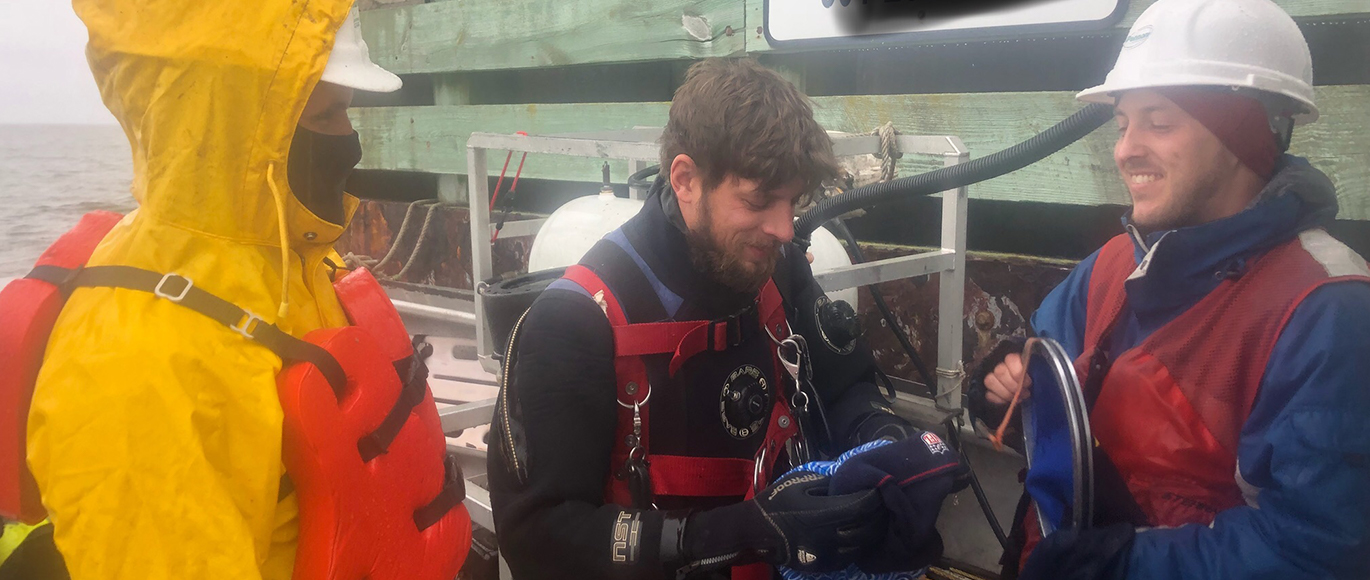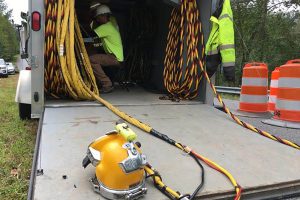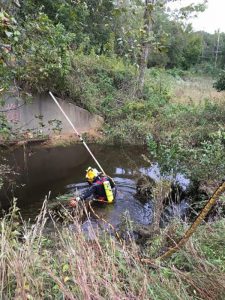
A message from Pennoni’s Associate Vice President and Bridge Inspection Practice Leader, Jennifer Laning
Pennoni’s bridge inspection team often finds themselves in “emergency mode”, receiving calls at all hours to respond to events like a bridge impact, flooding, or severe wind damage. The possibilities for emergency responses are limitless; hurricanes, flooding, a bridge hit by a truck, a damaged sign structure, and more. And trust me when I say that they don’t happen on anyone’s timeline but their own. They are usually on Fridays at 4 pm or at 2 am during a major holiday weekend—ask any bridge inspection specialist and they’ll have a story for you. From smaller-scale road flooding to major bridge structure failures like the Christina River Bridge tilting back in 2014, bridge inspection teams like ours must be prepared for all types of scenarios. Our response team members specialize in both the technical side of evaluating structure damage and are also professionals at navigating challenging logistics while communicating with our clients. In all emergency responses and our inspection work in general, internal and external communication is the key to success. 
Our team approaches every client at the start of a contract about their plan for handling emergencies. We confirm who will call us and who we should call. Our team is blessed with members who have great experience and skill in responding and handling tough situations when they arrive on site. Even though our team is equipped with our protocol manual for what to look for in common scenarios, I’d say that most scenarios are anything but common. We rely heavily on judgment and confidence in a strong understanding of key engineering principles for bridge and structural behavior.
Once our team arrives on the site of an emergency call-out, they review the incident report (if available), deploy non-destructive testing or the dive team for underwater inspections, and take common baseline measurements to determine, for example, how out-of-plumb the member might be. The first objective is to determine if the bridge can be reopened or if the sign structure can remain in service. If not, does something need to be done immediately, like close the structure or install temporary support? There is often pressure to reopen the road as soon as it’s safe, as road closures can create widespread inconvenience. With these factors in consideration, a successful rehab or repair analysis, which requires data collection, is something we usually only have one chance to get right; we need to properly take these measurements the first time because of impact to the community as well as the costs to close the structure and the cost to obtain access equipment. Our role as the engineer and trusted advisor is to work together with the client to safely and efficiently resolve these challenges. Sometimes the resolution cannot be a quick one, such as the Christina River Bridge, which was not reopened for three months, or when there are failures due to flooding, which may require structure replacement.
 A great example of a successful emergency response came this past October. A client of ours reached out for an underwater inspection after extensive flooding in Virginia. The call came on a Saturday, with a “When can you be here?” I made a call to our lead professional engineer diver, Nicholas Ward. Within one hour, I had answers for our client. “We’ll be there tomorrow.” The three-person team performed the inspection first thing in the morning, after several hours of driving. Nick and the team called me to inform me of the results and mentioned that the client was present during the dive and was thrilled with our fast response.
A great example of a successful emergency response came this past October. A client of ours reached out for an underwater inspection after extensive flooding in Virginia. The call came on a Saturday, with a “When can you be here?” I made a call to our lead professional engineer diver, Nicholas Ward. Within one hour, I had answers for our client. “We’ll be there tomorrow.” The three-person team performed the inspection first thing in the morning, after several hours of driving. Nick and the team called me to inform me of the results and mentioned that the client was present during the dive and was thrilled with our fast response.
The culvert, a pipe-like or box structure that allows water to flow underneath the road, had failed due to excessive flooding from the storm, leaving an enormous sinkhole in the road. Our measurements were valuable in determining the size of the emergency replacement culvert, giving the client and community the data they needed to resolve the issue. Here is where communication is key, however: As I hung up the phone with Nick, another call came from the field with concerns about failed structures at two other locations. We contacted Nick immediately and the team successfully inspected those two structures before heading home. Reports were submitted to the client within two days.
Emergency response is about being ready, being smart and being able to communicate. So, let me pose this question: Did you know Pennoni provides emergency response and underwater inspections? For more information on how we can help you with our underwater inspection services or emergency response capabilities, please contact Jen Laning, PE.
Jennifer C. Laning, PE
Jennifer C. Laning, PE, serves as Associate Vice President and Bridge Inspection Practice Leader. She is qualified as an NBIS Program Manager and Team Leader and works directly with local, state, and federal clients to ensure compliance with FHWA metrics for bridge, underwater, and sign structure inspection projects. As a project manager, she integrates assignments and work priorities of bridge, underwater, and sign structure inspection team members into a comprehensive plan and schedule to fulfill inspection commitments. Jen also performs Quality Assurance/Quality Control reviews on bridge inspection reports and related bridge rehabilitation and repair projects.
Jen is a registered professional engineer in ten states and holds a bachelor’s degree in civil engineering from Rutgers University and a master’s degree in civil engineering from Drexel University.
Contact Jen for more information.
